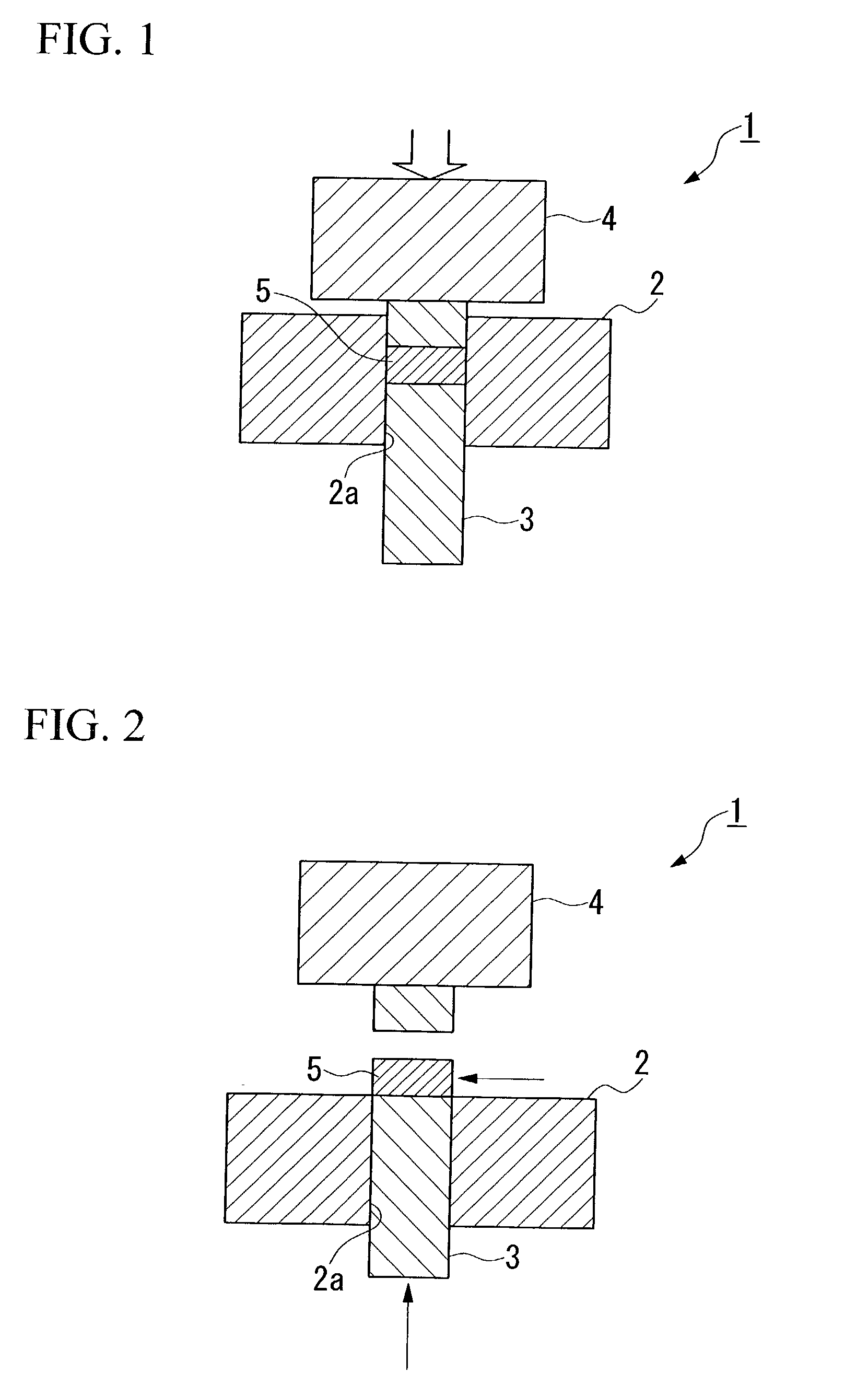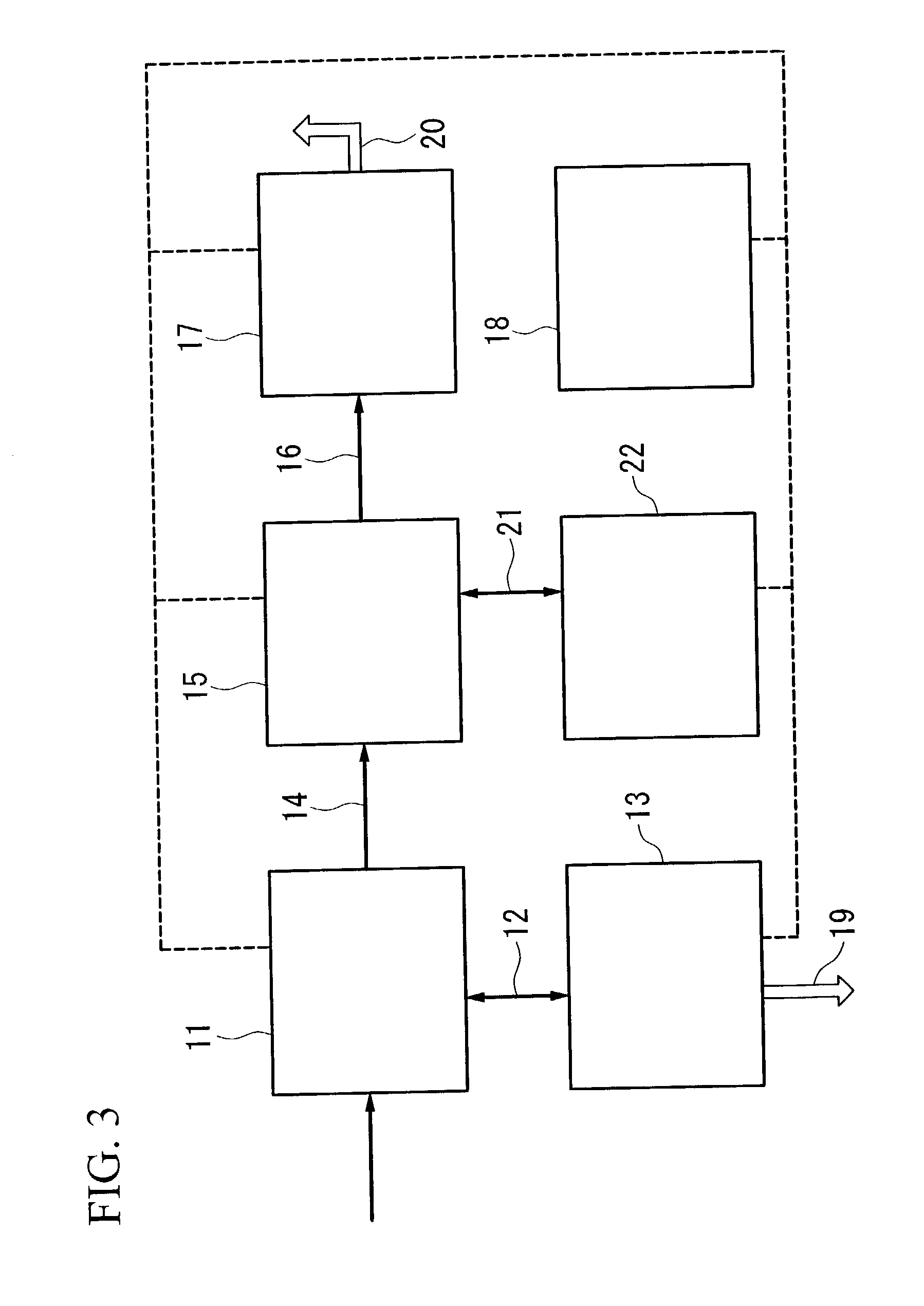Granular photocatalytic material, functional restoration method therefor, and apparatus for decomposing and removing toxic organic matter using the same
a photocatalytic material and functional restoration technology, applied in the direction of metal/metal-oxide/metal-hydroxide catalysts, natural mineral layered products, metal/metal-oxide/metal-hydroxide catalysts, etc., can solve the problems of poor light efficiency, difficult control of position when used in air or liquid, and inability to handle fine titanium dioxide particles
- Summary
- Abstract
- Description
- Claims
- Application Information
AI Technical Summary
Benefits of technology
Problems solved by technology
Method used
Image
Examples
example 1
[0108] Five parts of a fine titanium dioxide photocatalytic powder having an average particle diameter of about 5 to 300 nm and a particle size distribution of about 3 to 500 nm were kneaded with 2 parts of a polytetrafluoroethylene powder having an average particle diameter of 8 .mu.m to obtain a mixture. Then, the resulting mixture was granulated by a granulator. The granulated photocatalyst mixture was compressed by a tablet machine under the conditions of a temperature of 30.degree. C., a pressure of 1000 kg / cm.sup.2, and a pressing time of 0.1 seconds to obtain a granular photocatalytic material.
example 2
[0109] A 5 wt % solution of sodium hydrogen carbonate was applied on the surface of the granular photocatalytic material produced in Example 1 and then dried to obtain a granular photocatalytic material.
PUM
| Property | Measurement | Unit |
|---|---|---|
| length | aaaaa | aaaaa |
| length | aaaaa | aaaaa |
| wavelength | aaaaa | aaaaa |
Abstract
Description
Claims
Application Information
 Login to View More
Login to View More - R&D
- Intellectual Property
- Life Sciences
- Materials
- Tech Scout
- Unparalleled Data Quality
- Higher Quality Content
- 60% Fewer Hallucinations
Browse by: Latest US Patents, China's latest patents, Technical Efficacy Thesaurus, Application Domain, Technology Topic, Popular Technical Reports.
© 2025 PatSnap. All rights reserved.Legal|Privacy policy|Modern Slavery Act Transparency Statement|Sitemap|About US| Contact US: help@patsnap.com



